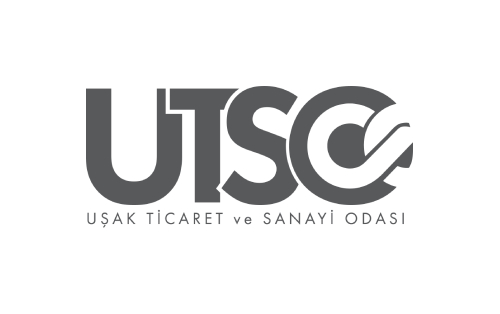Sinusitis Treatment and Endoscopic Sinus Surgery

Does everyone have a sinus?
Yeah, even a newborn baby has sinuses, even if they're too small. Initially, these pea-sized cavities are cavities that expand through the nose into the bones of the face and skull. It continues to grow and expand in childhood and young adulthood. They're air pockets. They are covered by the same membrane that covers the inner face of the nose and are connected to the nasal cavity with openings the size of a pencil head.
What do sinuses do?
Sinuses are part of the system of the nose, which forms normal secretion (mucus). Normally, the nose and sinuses secrete about half a liter of mucus per day. The produced mucus acts on the nasal cover (mucous membrane), removing bacteria, airborne particles and dust particles. Then this mucus is filtered back into the throat and swallowed. The particles and bacteria in it are broken down by stomach acid. Many people are not aware of this because it is a normal body function.
What does discharge from the back of the nose mean?
In the nose, it produces too much mucus than usual when disturbed by air pollution, substances that cause allergies, smoke or viruses. This is an secretion such as clear water, produced in abundance to wash and remove the allergic substance in the nasal membranes. A secretion, such as water, is formed towards the back of the nose. This event is the most important cause of the back flow. In another type, the mucus is sticky and thick. This occurs when the airways are too dry and the membranes cannot secrete enough fluid. In infections caused by bacteria, sticky and thick mucus is also observed, but the color of mucus can be yellow or green due to purulent yesilat.
What is sinus?
the October suffix"- it " refers to infection or inflammation in medicine. Therefore, sinusitis is an infection or inflammation of the sinuses. A typical case of acute sinusitis occurs with excessive secretion of mucus as a result of a cold or allergic attack. The membranes can swell so much that small openings of the sinuses close. If air and mucus cannot move comfortably between the nose and sinuses, mucus accumulates in the sinuses, leading to increased pressure.decoction Depending on which sinus is affected, pain occurs between or behind the eyes, cheeks and upper teeth, caused by decaying on the face or forehead. A sinus with a closed outlet and full of mucus is a very suitable environment for bacteria to reproduce. A possible bacterial infection has developed if the cold lasts longer than usual and the color of the mucus turns Yesil-yellow or a strange taste occurs. In cases of acute sinusitis, pain in the face and forehead can be very bad. Chronic sinusitis develops when the sinus outlet closes for a long time. Headache is rare, but discharge and bad smell continue. As a result of the fact that inflammation is very excessive, formations called polyps develop. Some cases of sinusitis occur as a result of infection in the upper tooth passing into the sinus.
Is sinusitis dangerous?
The vast majority of sinusitis cases respond to medical treatment and are not dangerous. However, an infection in the sinus is very close to both the eye and the brain. It is very rare for the infection to spread to the eye or brain. Mucus flowing from the infected sinuses is not healthy for the lungs. In this way, sinusitis; bronchitis, chronic cough or asthma either excites or causes them to occur.
What is sinusitis headache?
A headache that occurs during a cold or at the time when the nasal cover is swollen and the nose is running, or when the nose is full of mucus, on the face, cheeks, forehead, or around the eyes is probably a pain of sinusitis. A sinus infection causes this. Another type of sinus headache occurs when the plane descends to land. This is especially noticeable if you have a cold or active allergy (this is called a "vacuum headache"). Unfortunately, there are many other causes that can be confused with sinus headache. As an example, migraine and other vascular headaches or tension headaches can be confused with sinusitis, as they can cause pain around the forehead and eyes, as well as runny nose. But these types of headaches come and go in a short time without the intervention of a doctor. They differ from sinusitis, which lasts long without doctor intervention and can only be corrected with antibiotic treatment. However, the occasional headache that causes nausea and vomiting is rather a migraine headache.decongestant headache. For the diagnosis of severe, frequent and long-lasting headaches, a doctor should be consulted.
Who has sinus problems?
In fact, anyone can have a sinus infection, but some groups are more sensitive. Allergy sufferers: an allergy attack causes swelling of the mucosa, such as a cold, closing of the sinus channels, blocking the flow of mucus, and bacterial infection. For example, a broken nose or septum deviation (septum is a cartilage structure that decouples the nose in two, right and left, between the nostrils. Tilting this to one side is called deviation.) Those who are frequently exposed to infection: school teachers and medical staff are sensitive. Smokers: tobacco smoke, nicotine disrupt the natural resistance mechanism.
What will the doctor do for my sinuses?
Your ENT doctor will ask you questions about your breathing, the color and smell of your runny nose, and what events (at what time of day or in what Season ) cause these symptoms. Be prepared to describe your headache; when and how often it is, how long it lasts, whether it is associated with nausea, vomiting, visual impairment, or nasal congestion. An otolaryngologist will examine your ear, nose, mouth, teeth, and throat, especially paying attention to the appearance of the mucosa and the nature of the outbreak. He'll examine the sensitivity of your nose. In some cases, an X-ray of your sinuses may be necessary. Treatment of sinusitis will be associated with the diagnosis made by your doctor. For infections, antibiotic therapy or surgical intervention may sometimes require both. Acute sinusitis mostly responds to antibiotic treatment, while chronic surgery is usually required. Functional endoscopic sinus surgery (FESS), which has been applied in recent years, is a simple technique applied in the solution of these diseases. The results are quite successful. If the symptoms are caused by allergies, migraines, or another cause similar to sinusitis, your doctor will apply an alternative treatment plan.
What can I do for my sinuses?
Use a steam humidifier when you have a cold. Check if you have allergies. Sleep with the head side of your bed more elevated. Decongestants can be used, but they can be risky in those with high blood pressure, as the chemicals in them can act as adrenaline. At the same time, they are stimulants that cause insomnia. Consult your doctor before using it. Avoid contaminants that irritate your nose, especially cigarette smoke. Eat a balanced diet, exercise regularly. Try to limit your relationships with people you know to have an infection if this does not happen, take a number of precautions (washing hands, not using common towels and aprons). Many over-the-counter sinus medications are sold, but it is not right to use them without a proper diagnosis.
It is best to use medications given by your doctor, who examines you and knows about your complaints.
Sinusitis In Children
A very large part of the problems associated with otolaryngology in children are directly or indirectly related to allergies. It is estimated that 10% of children have allergic colds.
An underlying allergic disease should also not be overlooked in childhood sinusitis.
A number of findings during periods other than acute episodes of infection give us very important information about allergic disease. Runny nose, eczema, recurrent upper respiratory tract infections, sleep disorders, and restless harmony to horlayar or wheezing, middle ear infections, family history of allergy in the first are the features we're questioning the mother or father. Allergic cold can occur in seasonal or year-round forms.
Of course, in a nose that is frequently blocked, in a nose where air circulation is not good, the risk of developing sinusitis is much greater. A simple cold can easily turn into an attack of sinusitis in patients with this type of cold, especially in cold winter months, during periods of intense gripal infections.
Sinusitis is a disease that normally heals no later than 6-8 weeks. If symptoms last longer than 12 weeks and follow in acute episodes, we now start talking about chronic sinusitis. If the person has an immune problem, it should be investigated and eliminated until many other systemic diseases. For example, a foreign body(toy piece, food item, bead, etc.) in the nose, especially in children..) can cause foul-smelling discharge and sinusitis in the nose. It is extremely important that they are thoroughly investigated and that the treatment is regulated accordingly. Sinusitis in children especially, of course, according to the state of infection, if necessary, antibiotics and other supportive treatments applied, however, adenoid, highly large tonsils, nasal polyps, such as the growth of meat we call it, cause if you have nasal congestion that causes an obstruction, a surgical airway may need to be opened. Even in our patients diagnosed with chronic sinusitis, we also perform endoscopic sinus surgery in the pediatric group.
A new era has begun in nasal surgery with the widespread use of endoscopes in the medical field, and we no longer use many surgical techniques that we used in the past. If sinusitis is not well treated with medical treatment, and the need for surgery has been determined with films taken, endoscopic sinus surgery can also be successfully performed in pediatric patients.


















































